Introduction
3D web design has been making a significant impact across industries. With the rise of modern technologies like WebGL, JavaScript APIs, and 3D animation software, it's now possible to build visually stunning and interactive three-dimensional websites beyond traditional flat designs.
Over the past decades, web browsers have become more powerful and feature-rich.
The days when browsers could only handle standard 2D-based designs are long gone. Today, most modern browsers can support beautiful, high-performing, breathtaking 3D web designs. These can create user experiences that engage audiences and make websites stand out.
3D designs have significantly impacted various industries for several years, including e-commerce, gaming, film, augmented reality, and even artificial intelligence.
With modern technologies like WebGL, JavaScript API, and 3D animation software, you can develop websites with 3D effects that offer an immersive experience that flat designs cannot.
We've got you covered if you're ready to take your website to the next level and create memorable human experiences that evoke emotion through interactivity.
Whether you integrate 3D features yourself or work with a professional website design firm, ensure that user experience (UX), performance, and accessibility come before flashy visuals.
For teams looking to collaborate on more advanced builds, partnering with a professional web design company can help balance creative 3D elements with practical usability standards.Avoid excessive visual effects, which may distract from the core functionality and main content.
What Is 3D Web Design?
3D web design is a modern technique incorporating three-dimensional elements like depth, shadow, motion, and interactivity into web pages.
3D web design is a modern technique for incorporating three-dimensional elements with features like depth, shadow, motion, and interactivity into web pages.
This technique combines 3D graphics, text, and buttons with animation effects to create breathtaking 3D visuals and experiences that motivate user interaction. It can also involve transitions, parallax scrolling, and even mouse interactions.
Essential Visual Features of 3D Web Design
Essential features of 3D visuals such as depth, movement, and interactivity can enhance realism by influencing the user's sense of perspective, which allows them to see more than just pixels on a screen.
3D visuals provide creative realism and an illusion of depth by influencing our sense of perspective so that we see more than pixels on a screen. These features mimic real-world scenarios to make flat designs feel tangible.
Below are the essential visual features of 3D web design that help build immersive and interactive experiences:
1. Depth
Depth gives the illusion of 3D space through shadows, layers, distance, and spatial effects. Design methods like parallax scrolling, layering, and rendering in 3D suggest a notional separation between elements, which enhances the design's sense of dimension and visual depth.
In 3D web design, depth provides users with a unique experience. It adds a touch of realism, making the website more engaging, interactive, and enjoyable to browse.
2. Movement
Movement isn’t just about animation but also storytelling. Using transitions, animations, and motion effects to alter the visual perspective of a webpage helps guide user attention and create more immersive 3D experiences.
It usually includes integrating images and illustrative 3D elements that can scroll, slide, translate, bounce, rotate, or respond to mouse and touch interactions.
3. Interactivity
A website that lacks interaction remains flat and lifeless. Interactivity is a primary feature of 3D design, enabling user interaction with elements by hovering, clicking, or dragging them to reveal details or trigger animations.
Unlike static visuals, interactive 3D features support user-driven experiences, which are helpful for gamification, e-commerce, education, and virtual environments.
Standard Techniques in 3D Web Design
3D website design uses multiple approaches to integrate three-dimensional features within web pages.
These techniques are fundamental to developing modern 3D web experiences, from the underlying technologies to the user's encounter with the content.
1. 3D graphics
3D graphics are one of the most vital parts of modern 3D web design. They include various imagery, such as product models, interactive background elements, and 3D objects that users can view, rotate, and interact with directly within the browser.
These graphics are extremely helpful in e-commerce, gaming, and virtual exhibitions.
2. Parallax scrolling
Parallax scrolling is a technique in which background, foreground, and 3D elements move at different speeds to create the illusion of depth as users scroll. In 3D web design, this effect goes further by syncing actual 3D models at certain scroll levels for controlled movement and depth-based interactive scrolling engagement.
This is a valuable tool for storytelling, portfolios, and landing pages. It helps guide users toward key content while creating a visually appealing experience.
3. Animations
Animations allow you to progressively change the style or position of a 3D element over time.
Common animations in 3D design include rotation, scaling, transitions, orbiting, panning, dynamic shadows, and other transformations that add realistic depth and motion to a web page.
Static vs. Interactive 3D Elements
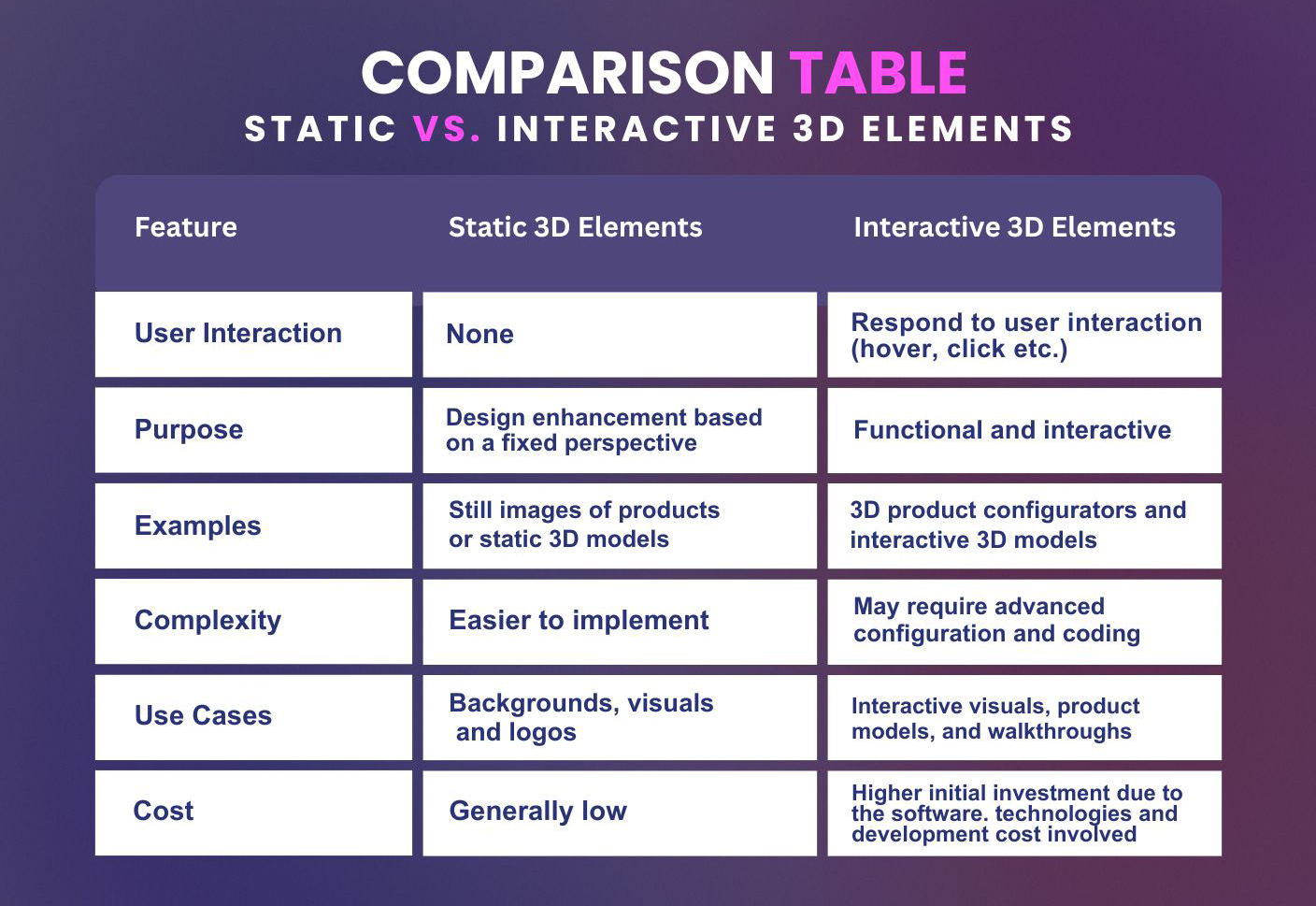
Understanding these differences helps businesses choose the right approach to create a memorable storytelling, practical usability, and stronger audience impact.
Both static and interactive 3D design play essential roles in shaping the features, presentation, and overall user experience of a 3D website. Across industries, many use 3D websites to enhance visual presentation, improve engagement, and offer more customization.
Understanding the difference between the two helps businesses choose the right approach to create memorable storytelling, practical usability, and a more substantial audience impact.
What is static 3D design?
Static 3D design employs high-quality, non-interactive design elements created using 3D software to enhance a website's overall look. These can include still images, 3D models, or icon renderings that do not respond to user actions. They're often placed in headers, essential sections, or background visuals to support branding and style.
A great example of static 3D design is a photorealistic product render used in a gallery on an e-commerce website. Image carousels show multiple angles of the product, and these renders showcase detailed parts while completely static.
What is interactive 3D design?
Interactive 3D design involves techniques that use 3D elements responding to user actions like clicks, drags, or hovers, so advanced they seem like technology from a sci-fi movie. Instead of viewing images as static, users can control the interactive environment's elements: rotate, scale, and manipulate objects, all in real time.
This method improves engagement and overall website experience by turning interface design into an interaction. It's commonly used on high-end e-commerce platforms, advanced real estate sites, product configurators, virtual environments, and gaming interfaces.
Why 3D Websites Gaining Popularity?
Business owners and brands build 3D websites to strengthen identity, build trust, and increase conversions.
Here are the primary reasons why 3D websites are becoming more popular across industries like e-commerce, real estate, and creative portfolios:
1. Stronger visual identity
3D components can make a website stand out from the competition. Unlike 2D designs, 3D elements evoke a sharp, distinct, and immediate recognition, which is much more memorable.
2. Higher engagement
Interactive elements significantly outperform static visuals. According to a study by Mediafly, interactive content generates 52.6% more engagement than static alternatives. Several website developers incorporate 3D elements to spark interest, increase visit duration, and improve retention.
3. Enhanced brand storytelling
With many 3D website examples online, this design style has become a practical way to share immersive stories. Users can effortlessly scroll through 3D animations, which guide them through a precise narrative flow and take them on a visually engaging journey. When fused with background effects, animated text, and sound design, 3D websites can effectively convey brand stories and help users stay engaged as they navigate through the website.
4. Improved browser and hardware support
The rise of modern technologies like WebGL and JavaScript APIs enables smooth rendering of interactive 3D content without any plug-ins. Whether on desktops, tablets, or mobile devices, 3D websites can now run across platforms.
Best 3D Website Examples
Whether you want to enhance your site's visuals or build an interactive experience, 3D website design offers more than just aesthetic appeal.
Here is a list of 3D website examples and reviews that cover the design aspects, animation, and interaction features of each, as well as the unique highlights of each.
1. Dora
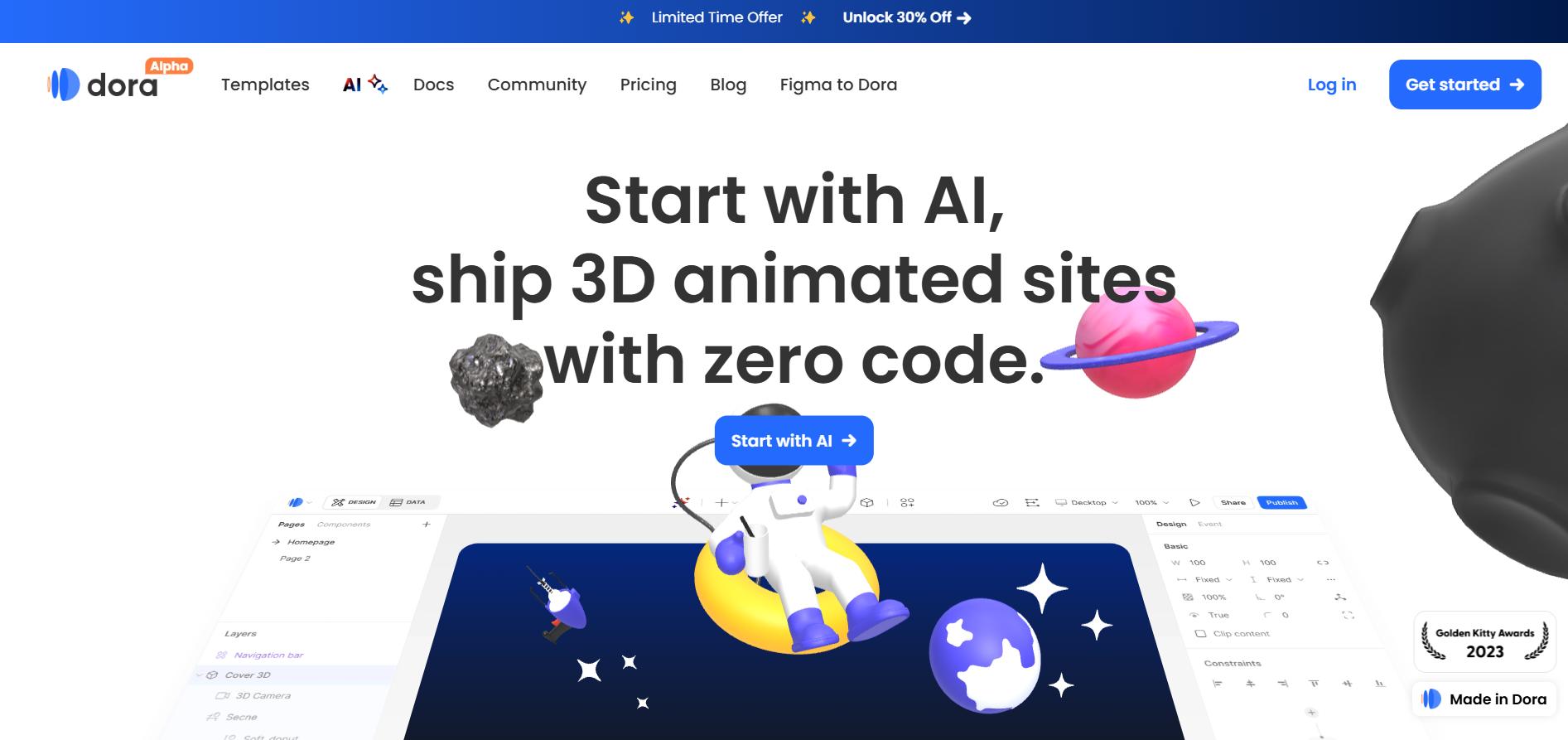
Dora cursor-reactive elements, video-based guides, and responsive layout make it easier for users to explore and understand the platform's features. (Source)
Dora is a no-code, prompt-driven website builder that allows users to import animated 3D assets, apply transitions, and animate them using keyframes for smoother motion control.
This website stands out for its smooth 3D animations and fluid transitions, which makes it one of the most impressive 3D website examples available today. Its cursor-reactive elements, video-based guide, and responsive layout make it easier for users to explore and understand the platform's features.
2. Peter Tarka
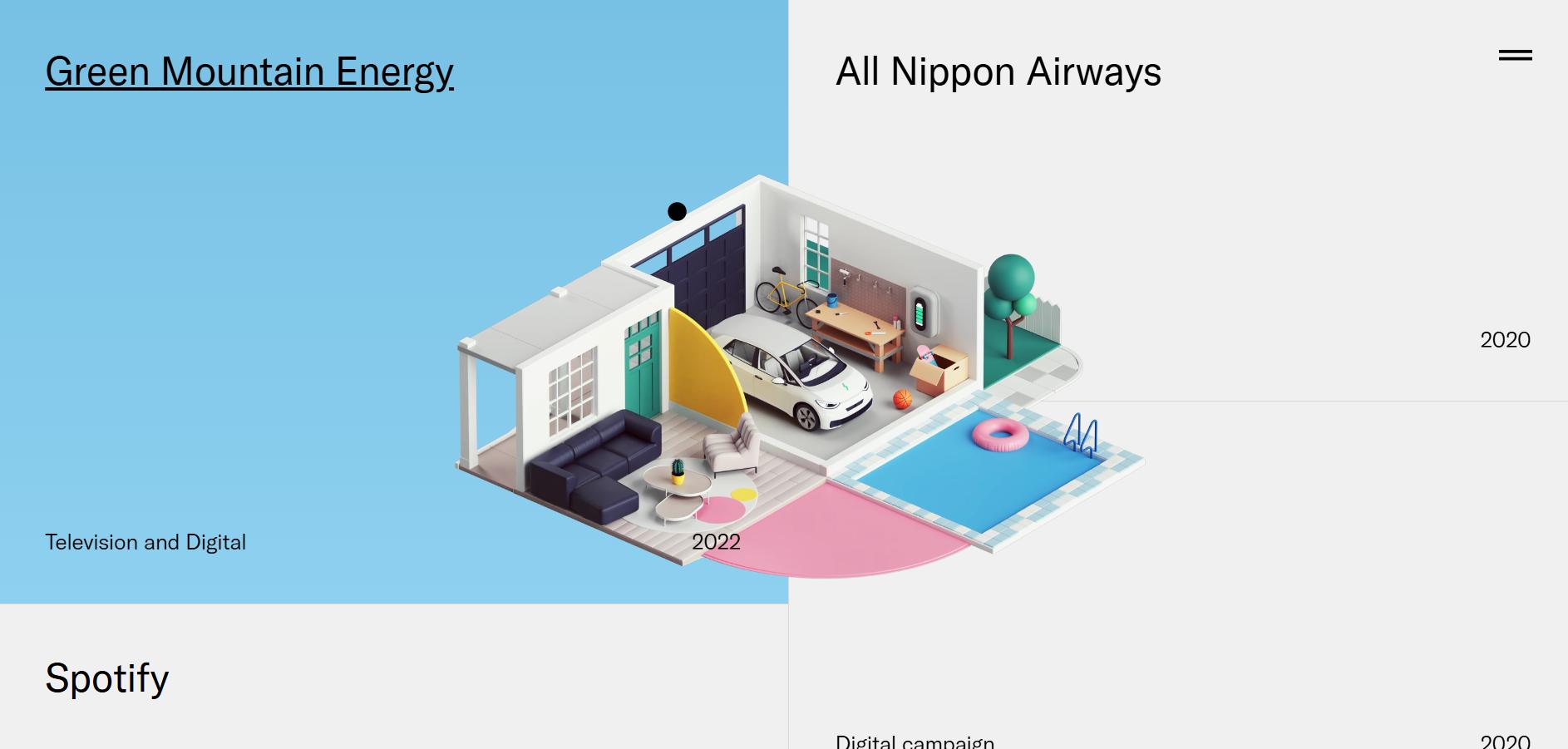
Clicking on these elements reveals case studies, which turns browsing into an interactive experience. (Source)
Peter Tarka's 3D website is another excellent example of how 3D design can elevate a creative portfolio. It features deep visual layers and bold color schemes to display his compositions like a 3D sculpture gallery.
The layout is clean yet sophisticated, with each 3D element representing a project. Spatial depth and angle variation also add a surreal gallery-like atmosphere. Clicking on these elements reveals case studies, which turns browsing into an interactive experience.
3. Clou Architects
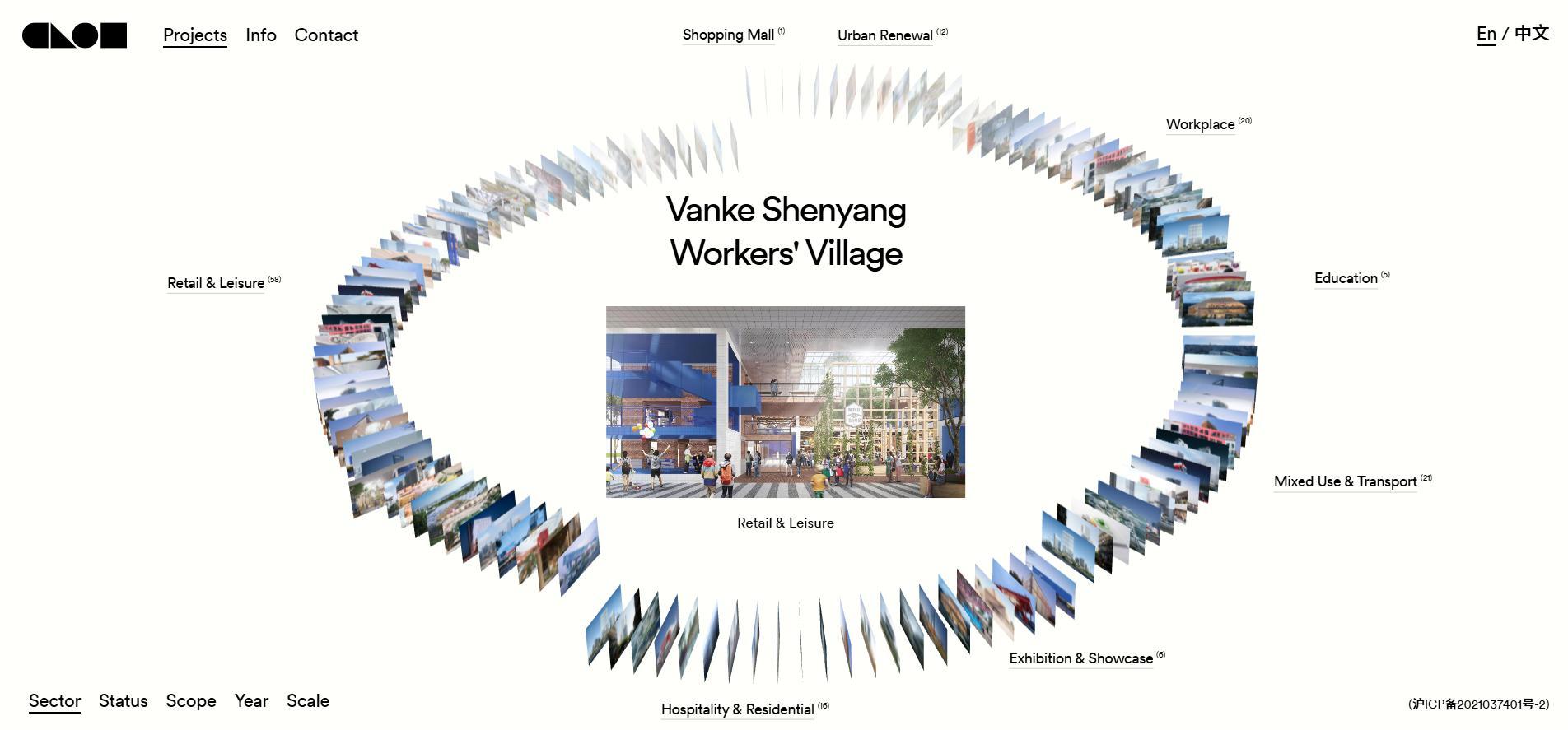
Using micro-interactions such as hover effects and clicks, each slide emerges like a file being pulled from a circular drawer. (Source)
Clou Architects is another standout 3D website example. It presents its architectural projects using realistic 3D walkthroughs and rotating models.
Clou Architects leverages modern technologies to present a clutter-free interface with recent building projects. Using micro-interactions like hover and clicks, each slide emerges like files pulled from circular drawers. Furthermore, hovering over a slide displays a larger version with project preview details, while clicking lets you delve into the full content.
4. Three.js Journey
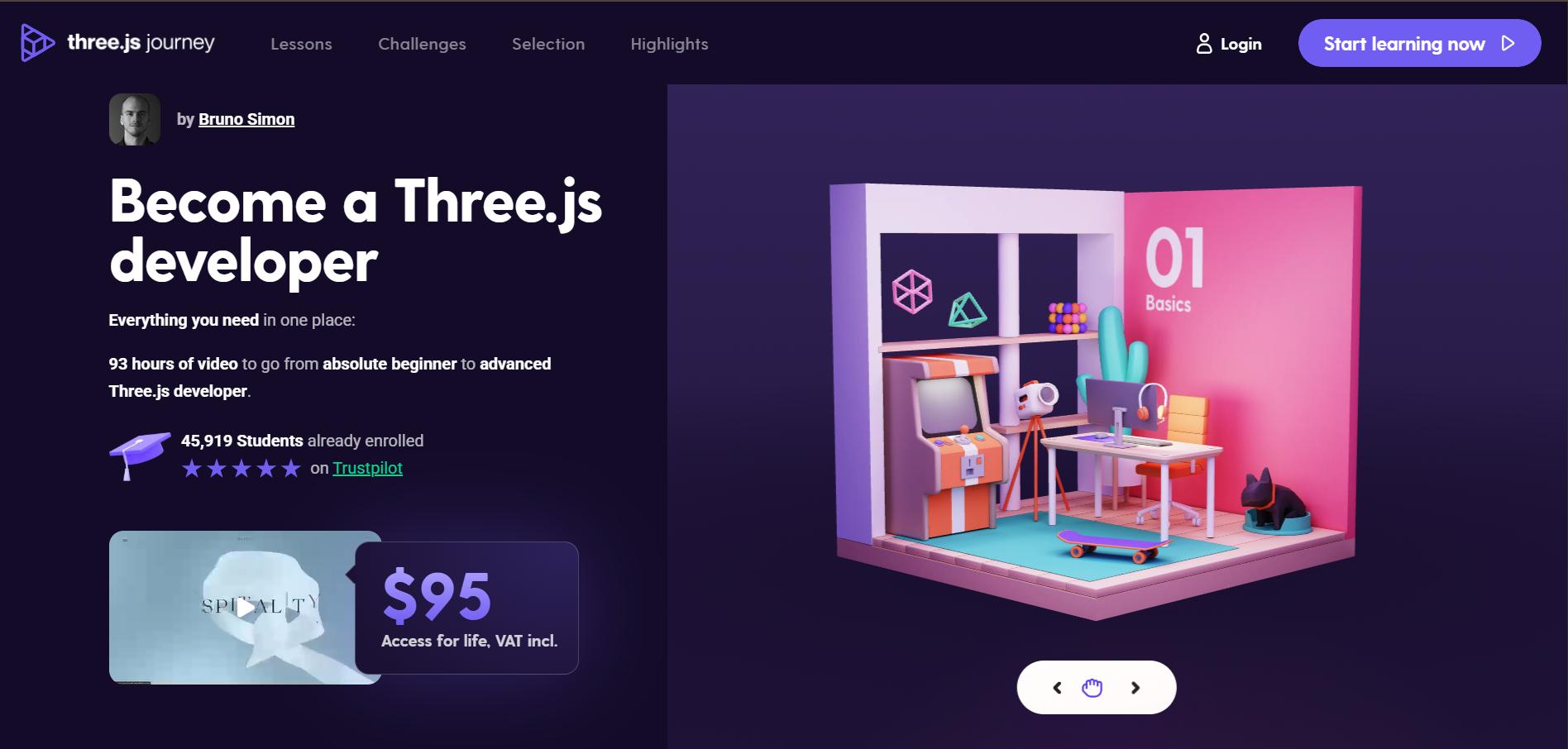
Three.js Journey features a clean design, live 3D demos, and interactive sandboxes for hands-on learning. (Source)
Three.js Journey is an online learning platform that teaches 3D through live code demonstrations.
Three.js Journey's 3D website features a clean design with live 3D demo content and interactive sandboxes, making it one of the perfect 3D website examples for learning 3D on the web. It uses dark background colors and light accents to present information clearly and divides each chapter using tabs. This site remains one of the top 3D website examples for systematically learning Three.js.
Tools and Platforms for Creating 3D Websites
Developing a 3D website is an overwhelming task.
To build a stunning 3D website, you need the right tools, software for models and animations, JavaScript libraries, and relevant platforms. If you want to save time or need expert help, partnering with one of the best website design agencies can be smart.
To help you start your 3D website design and development journey, here are some streamlined tools and technologies you can use to bring your design ideas to life.
1. Three.js
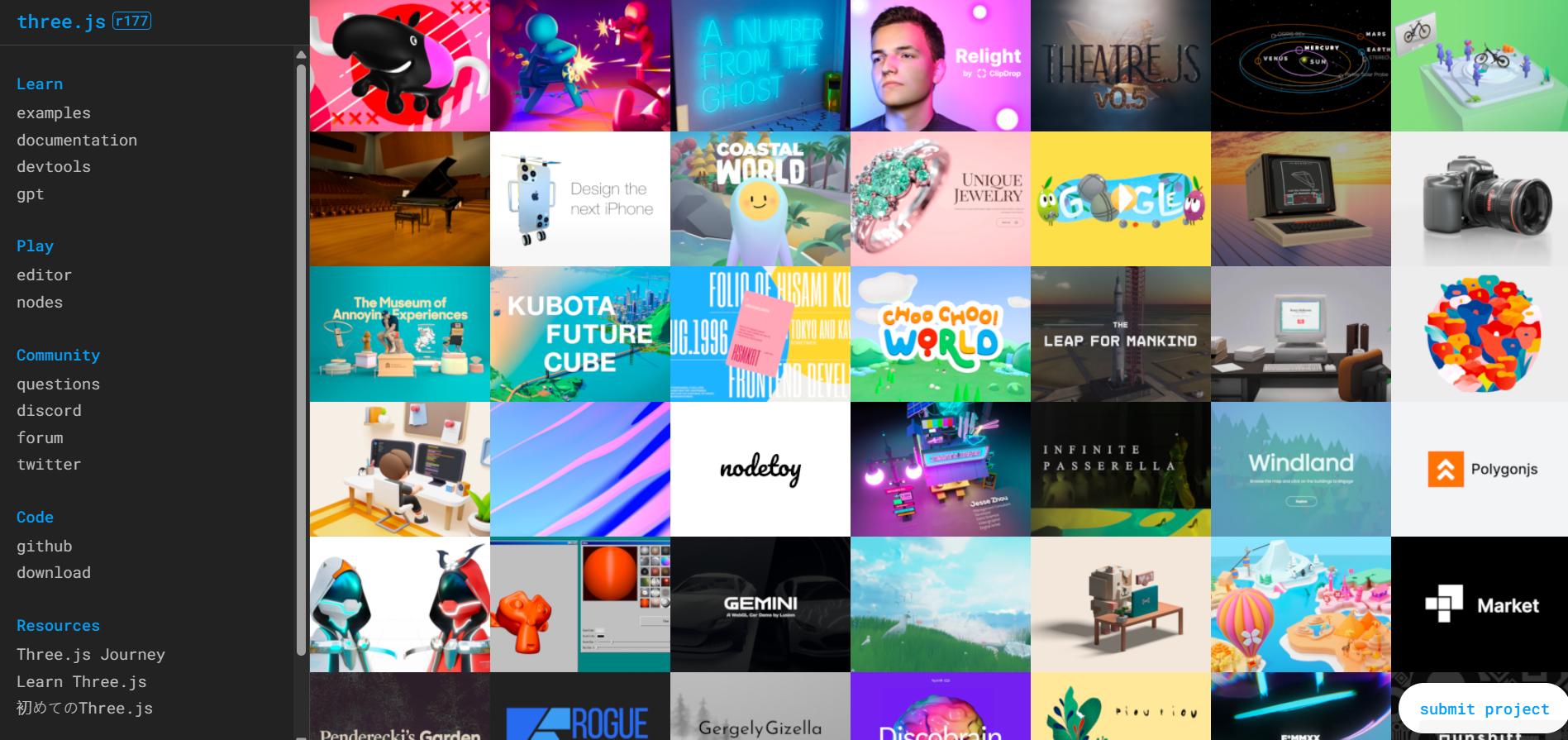
Three.js simplifies 3D web development by providing a high-level framework that leverages WebGL 2.0 for hardware-accelerated 2D and 3D rendering. (Source)
Three.js is the most popular and widely used JavaScript library for rendering 3D models in the browser without plugins. It simplifies 3D web development by providing a high-level JavaScript framework that leverages WebGL 2.0 for hardware-accelerated 3D and 2D rendering.
Best use case: Perfect for custom creation of 3D animations and interactions, product showcases, browser-based games, data visualizations, and augmented reality applications.
2. Spline
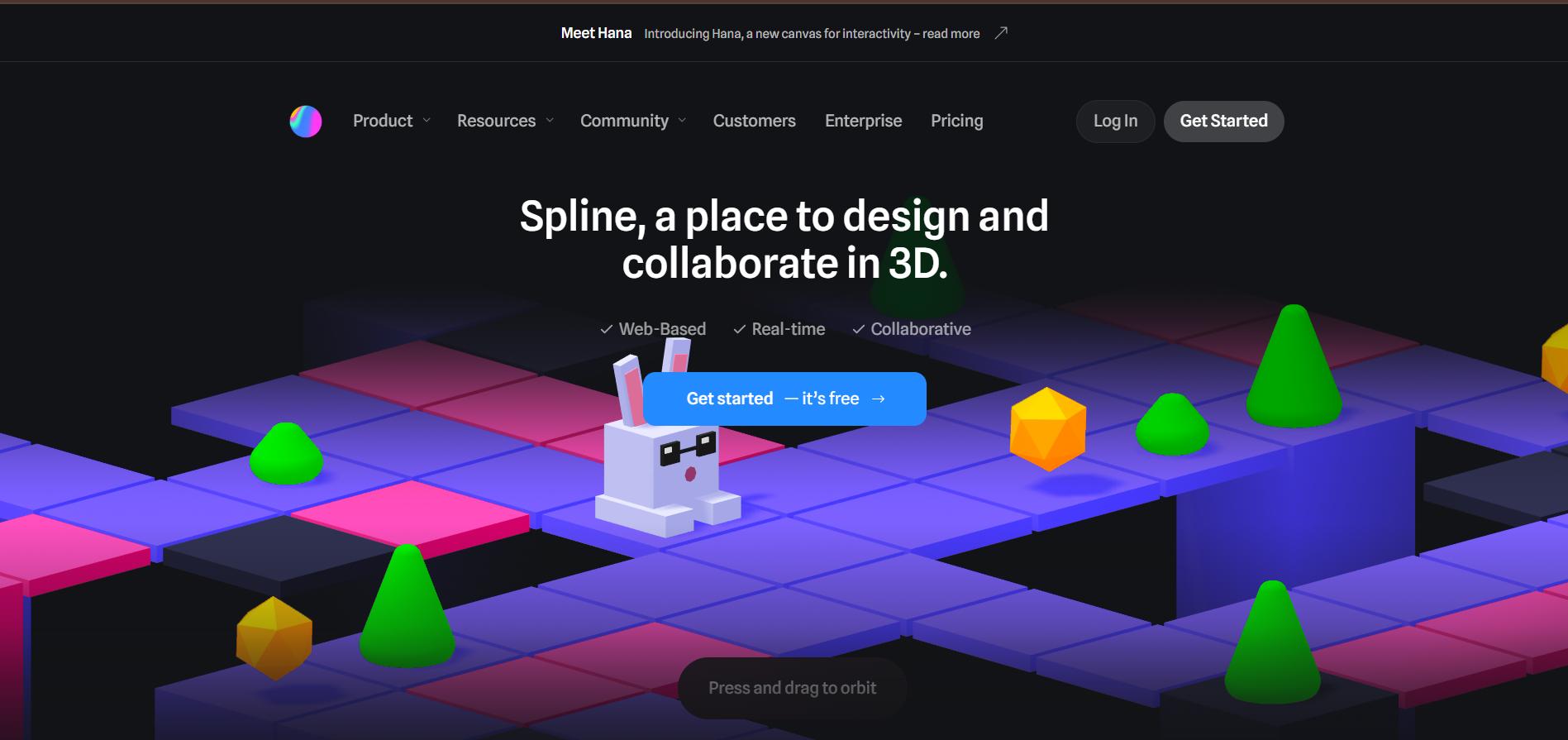
Spline offers an intuitive drag-and-drop interface, built-in animations, real-time collaboration, and the option to embed 3В designs directly into websites. (Source)
Spline is a no-code browser-based 3D design tool that allows users to create 3D objects easily, add interactive features, and export their work. It features an intuitive drag-and-drop interface with built-in animations, real-time collaboration, and the option to embed designs into websites.
Users can export their creations in formats such as GLTF/GLB, STL, public URLs for embedding, images (such as PNG JPG), or even as code (e.g., React, HTML, and Three.js, among other compatible formats).
Best use case: It is perfect for creating 3D prototypes without writing code, quickly building mockups for websites or apps, and seamlessly exporting designs in visual and code-ready formats.
3. Blender
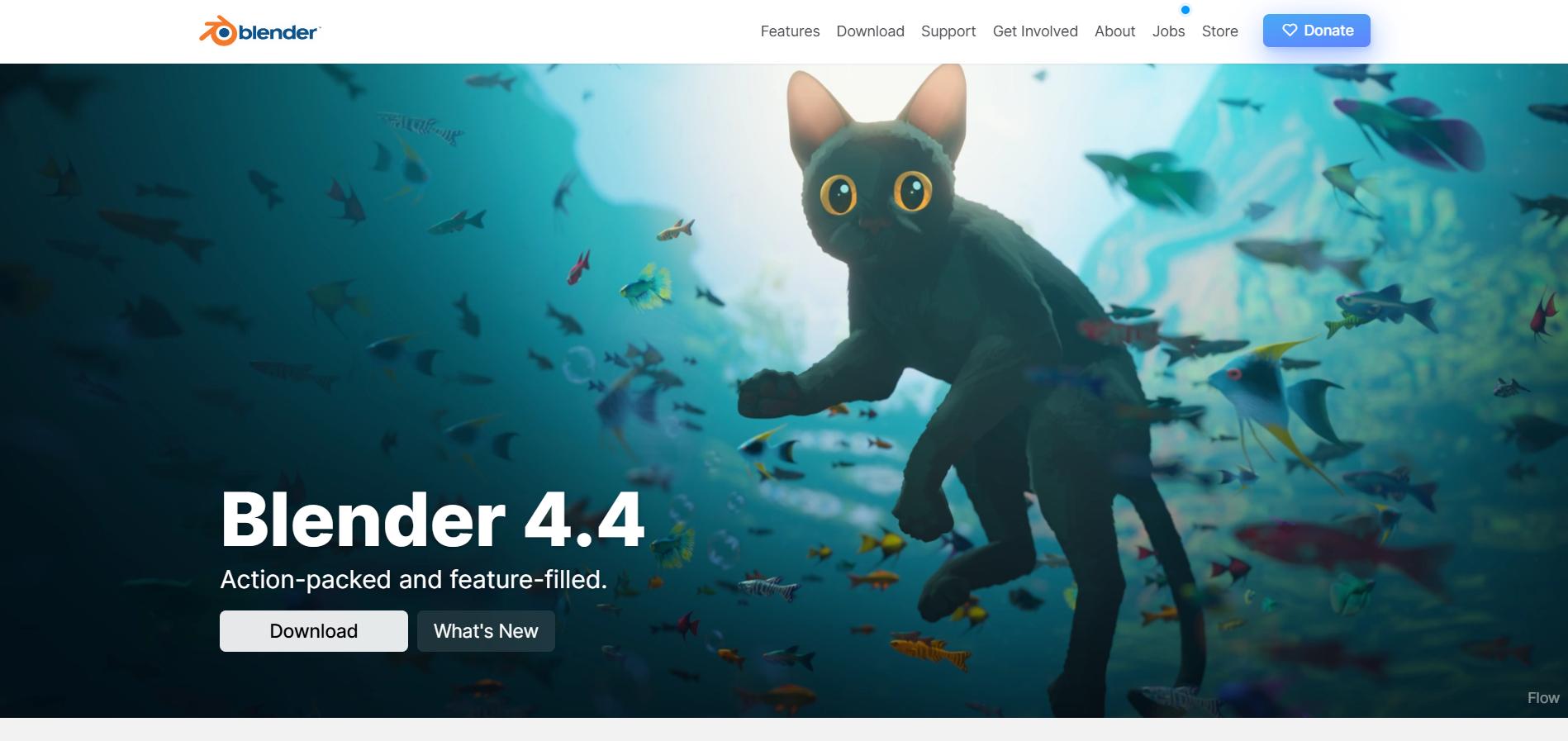
Blender is ideal for designing high-end 3D assets for websites and exporting them in web-friendly formats such as GLTF or GLB. (Source)
Blender is free, open-source 3D modeling and animation software to create 3D elements, motion graphics, and interactive virtual experiences. Widely adopted for both personal and commercial use, Blender supports high-quality modeling, texturing, rigging, and animation workflows.
Thanks to its robust feature set, Blender is ideal for designing high-end 3D assets for website designs and exporting them in web-friendly formats such as GLTF/GLB.
Best use case: Excellent tool for creating custom 3D website assets and complex 3D models. It also integrates well with web tools like Three.js and Spline, which makes it a valuable part of any 3D web development pipeline.
4. Webflow
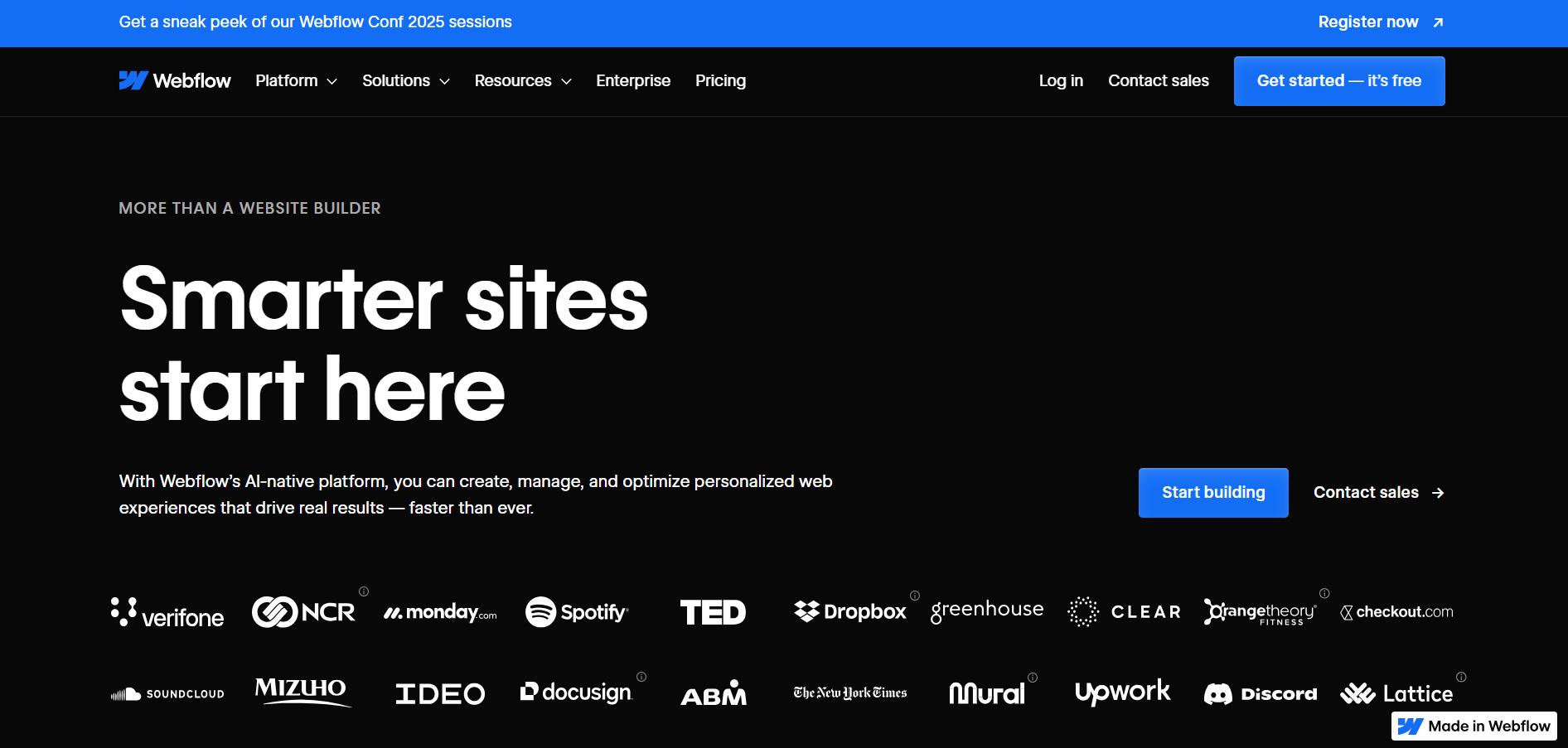
Webflow is known as a no-code visual web design platform used for creating beautiful web pages and integrating 3D interactions. (Source)
Webflow is a leading no-code visual web design platform due to its flexibility and capability to integrate 3D interactions. It provides a visual interface for building responsive websites and generates clean HTML, CSS, and JavaScript code behind the scenes.
Integrating 3D tools such as Spline, Vectary, and Three.js is effortless with embeds, making 3D elements and animations on websites seamless.
Best use case: Ideal for beginners or marketers with less or no coding experience who want to quickly build professional websites with 3D features. It's useful for creating an interactive portfolio, product page, or promotional website that offers an immersive visual 3D experience.
5. Babylon.js

Babylon.js is excellent tool for creating complex scenes, especially those involving physics, VR/AR, or game-like interactions due to its built-in physics engine and advanced rendering capabilities. (Source)
Babylon.js is an open-source framework for high-performance 3D in browsers built on WebGL and WebGPU. Similar to Three.js, it is a robust JavaScript framework and 3D rendering engine that enables the display of 3D data using HTML5/WebGL.
Due to its built-in physics and advanced rendering engine, this tool is better suited for complex scenes, especially those involving physics, VR/AR, or game-like interactions.
Best use case: Preferred for building high-performance, interactive 3D applications and browser-based games. It's particularly useful in fields like medical visualization, engineering simulations, and virtual training environments.
When (and When Not) to Use 3D in Web Design
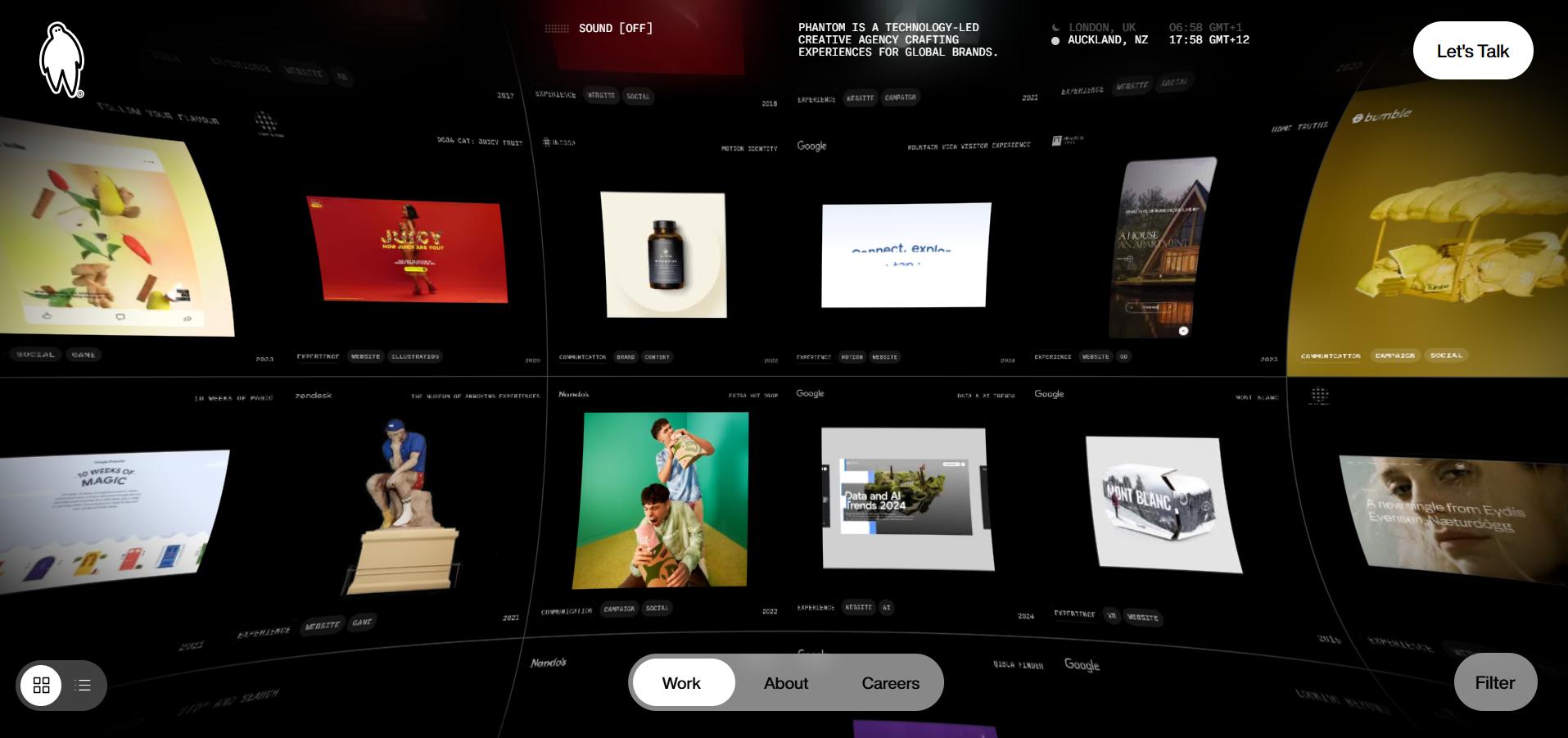
The Phantom website presents a 3D gallery-like effect to present its creative and digital projects. (Source)
3D web designs can enhance a website’s visual appeal and overall user interaction, but they are unsuitable for every project.
Applying 3D features could sometimes hurt performance, especially if they consume too much of your website’s bandwidth, overuse system resources, or pull attention away from vital information.
When to Use 3D in Web Design:
Creative agency portfolios. Using 3D design to present recent projects can be more effective than 2D images. It can make basic presentations using dynamic storytelling tools.
Example: A 3D-rendered virtual environment, similar to Noomo Agency, where users can experience immersive storytelling while exploring the interactive portfolio.
Product visualization. Unlike static photos, 3D product models let customers examine items from every angle and customize details, making the experience more tangible and interactive.
Example: An e-commerce website similar to Nike By You. This website lets users customize shoes in real time using an interactive 3D model environment.
Interactive educational or gaming experiences. 3D elements can improve content's learning and entertainment value, making it more elaborate and interactive.
Example: A 3D solar system simulation, like the Solar System Scope. This 3D application allows users to navigate planetary orbits and astrological information and interactively immerse themselves in outer space.
When to Avoid 3D in Web Design:
1. Fintech platforms. Financial platforms must prioritize speed, clarity, and data accuracy over impressive visuals. Due to the complexity of data visuals, adding 3D elements runs the risk of distracting users from important financial information while also slowing down performance.
Example: A stock trading platform like eToro requires fast access to charts and financial data. 3D animations and transitions would interfere with real-time fiscal data and updates.
2. SaaS dashboards. A Software as a Service (SaaS) application is designed to handle data and workflows. While visually appealing design is essential, incorporating 3D elements can sometimes overwhelm users and disrupt core functionality.
Example: A cloud-based CRM system like HubSpot may experience slower performance and reduced usability if interactive 3D components are incorporated into major functional sections.
3. Text-heavy or documentation-rich sites. Sites built on delivering detailed written content, like wikis and blogs, should avoid unnecessary 3D graphics. Excessive 3D visuals may hinder readability and take attention away from the core information.
Example: A knowledge base like the Wix Help Center is meant to deliver fast, readable instructions. Animated 3D visuals could become a distraction and slow down loading times, especially for users seeking quick reference.
Wrapping Up
Integrating 3D features to your site can create a more interactive and memorable experience that helps your brand stand out.
Jun 13, 2025
